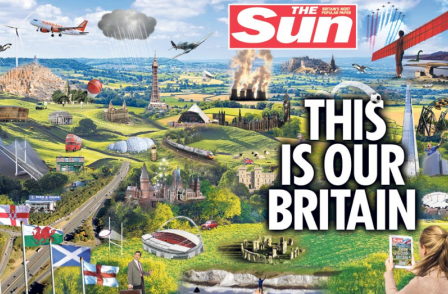
- Sun's 1.81 per cent July web market share drops to 0.81 per cent on 11 August
- Better performance than when The Times went behind a paywall in 2010
The Sun’s website lost more than a third of its market share of internet visits in the first ten days following its move behind a paywall, new research suggests.
In the first indication of reader behaviour since the News UK title started charging for access to its online content, there is evidence that many have switched to rival free news websites.
According to Experian Marketing Services, between 1 August (when The Sun began charging for online accessl) and 11 August, The Sun’s market share of all UK visits to news and media websites fell from 1.27 per cent to 0.81 per cent. This represents a fall of 36 per cent.
During the same period, Mirror.co.uk experienced a 26 per cent boost to its market share, growing from 1.27 per cent to 1.58 per cent. Experian was not able to provide market share figures for other sites.
The fall in visits for The Sun is even greater compared with the relative traffic for the site in the month immediately ahead of the launch of the paywall. Across the whole of July, The Sun took 1.81 per cent of market share in the sector, while the Mirror’s share was 1.08 per cent.
Despite the declining share of the market, James Murray, digital insight manager at Experian, said the data was a positive result for The Sun.
“This might seem like bad news for The Sun but in reality this should be viewed positively,” he said. “Let’s not forget that a 36 per cent decline means that The Sun has retained 64 per cent of their original market share.
"It’s important to recognise that not everyone going to The Sun will become a subscriber but their average site visit time is still comparable to The Mirror which suggests people are paying for and reading the content. Going behind a paywall was always going to lead to a decline in visit numbers but in perspective losing 36 per cent market share is relatively light."
Murray said that the initial results for the first 11 days of The Sun compared favourably with those of The Times, which put up a paywall in July 2010 and lost 66 per cent of its market share in the first full month.
He added: “The fact that The Sun has only lost 36 per cent market share is evidence that people are becoming more accustomed to the idea of paying for news content which they value. In an era of a booming video content market with LoveFilm and Netflix and the rise of Sky Sports and BT Sports subscriptions, a paywall for news and other video content is something customers are prepared to pay for.
"Like previous news sites before it, The Sun has taken a risk in launching a paywall. The gamble is to appeal to a smaller audience of people willing to pay for content, rather than a bigger audience looking for free content; but it’s a gamble which initially seems to have paid off.
"It will be interesting to see if this remains to be the case a few weeks down the line when the introductory subscription offer of £1 ends and whether this prompts other tabloid sites to take similar steps."
There were notable increases in the number of browsers visiting Mail Online, Mirror.co.uk and the Daily Star sites directly after visiting The Sun on the day the paywall went up.
Measuring which sites browsers visited after leaving The Sun’s site on 1 August – a metric known as “downstream traffic” – Experian found that 9 per cent went straight to Mail Online, with just over 5 per cent visiting the Mirror and another 2 per cent going to the Daily Star.
Compared to the downstream traffic for the previous day, these represent increases of 32 per cent for Mail Online, 46 per cent for the Mirror and 40 per cent for the Daily Star.
The Mirror and Daily Star have both been engaged in marketing pushes to attract Sun readers to their websites.
Simon Fox, chief executive of Mirror publisher Trinity Mirror, told Press Gazette ahead of the launch of The Sun paywall that the paper "would consider [it] a good result" if 10 per cent of its 30m unique users subscribed to the paid-for site.
"That leaves a lot of unique users," he added. “We would very much hope they would choose to come to the Mirror and we will be very focused on welcoming them to our website."
The Sun has been encouraging print users to log-on for free to the new website for a month by using a unique code which is printed in each day's paper.
It is also offering online subscribers the chance to sign up to one month's access for £1 as a trial offer. The full Sun website subscription price is £2 per week, with almost no content (other than headlines) offered to non-subscribers.
One of the main incentives for signing up to The Sun website is access to near-live video clips of every football Premier League goal. So the numbers may receive a boost after the Premier League season starts this weekend.
In June the Sun had 29.6m 'unique browsers' worldwide according to ABC versus 29.4m for the Mirror and 120.8m for Mail Online.
Sun (in green) versus Mirror (in blue) website market share
Source: Experian Hitwise
Visitors going from Sun to other tabloid websites: Mail Online (red), Mirror.co.uk (blue), Daily Star (green)
Source: Experian Hitwise
Email pged@pressgazette.co.uk to point out mistakes, provide story tips or send in a letter for publication on our "Letters Page" blog

